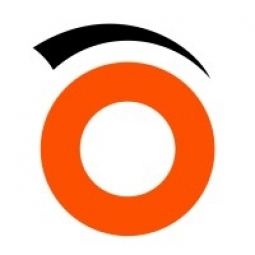公司规模
SME
地区
- Europe
国家
- Denmark
产品
- Zenoss
技术栈
- Atlassian Jira
- Zenoss ZenPack
实施规模
- Enterprise-wide Deployment
影响指标
- Productivity Improvements
- Customer Satisfaction
技术
- 应用基础设施与中间件 - API 集成与管理
适用行业
- 医疗保健和医院
- 零售
适用功能
- 商业运营
用例
- 基础设施检查
- 远程资产管理
服务
- 系统集成
- 软件设计与工程服务
关于客户
Netic A/S 是一家为丹麦公共和私人客户提供托管应用程序运营服务的公司。该公司成立于 2003 年,此后一直专注于应用程序运营,包括监控从裸机到应用程序本身的整个堆栈。其客户之一是丹麦零售商 JYSK,该公司通过 Netic 运营的全球电子商务平台在全球 2,800 家门店销售床、床单和家具。Netic 还使用 Zenoss 监控丹麦全国医疗网络 MedCom 的应用程序及其底层基础设施的性能。
挑战
Netic A/S 是一家为丹麦公共和私人客户提供托管应用程序运营服务的公司,成立于 2003 年,其宗旨是使 IT 运营比通常情况更智能、更好。从那时起,Netic 就越来越专注于应用程序运营,这涉及监控从裸机到应用程序本身的整个堆栈。因此,Netic 一直在寻找一种解决方案,该解决方案必须满足一系列重要参数,包括:能够处理整个堆栈的监控,重点是基础设施、可扩展性和成本效益。作为托管服务提供商,Netic 需要一个能够实现职责分离并能够水平和垂直扩展的监控平台。这些问题意味着 Netic 难以有效地为客户提供最高价值——而在竞争激烈的环境中,这一点很快就会变得至关重要。因此,启动了一个项目来识别、测试和采用新的监控解决方案。
解决方案
Netic 选择 Zenoss 来监控大部分基础设施,支持 Netic 为其客户运营的应用程序。Zenoss 是经过审查后选择的,该审查测试了监控端到端基础设施的关键需求。在测试期间,Netic 评估了 Zenoss 与首选项目管理和工作流工具 Atlassian Jira 集成的能力。Netic 利用 Zenoss ZenPack 架构轻松构建了 Zenoss 和 Jira 之间的无缝集成,包括显示活动事件的仪表板。评估期结束后,Zenoss 脱颖而出,成为最强的候选者,并被选为 Netic 现有监控工具的替代品。
运营影响

Case Study missing?
Start adding your own!
Register with your work email and create a new case study profile for your business.
相关案例.

Case Study
Hospital Inventory Management
The hospital supply chain team is responsible for ensuring that the right medical supplies are readily available to clinicians when and where needed, and to do so in the most efficient manner possible. However, many of the systems and processes in use at the cancer center for supply chain management were not best suited to support these goals. Barcoding technology, a commonly used method for inventory management of medical supplies, is labor intensive, time consuming, does not provide real-time visibility into inventory levels and can be prone to error. Consequently, the lack of accurate and real-time visibility into inventory levels across multiple supply rooms in multiple hospital facilities creates additional inefficiency in the system causing over-ordering, hoarding, and wasted supplies. Other sources of waste and cost were also identified as candidates for improvement. Existing systems and processes did not provide adequate security for high-cost inventory within the hospital, which was another driver of cost. A lack of visibility into expiration dates for supplies resulted in supplies being wasted due to past expiry dates. Storage of supplies was also a key consideration given the location of the cancer center’s facilities in a dense urban setting, where space is always at a premium. In order to address the challenges outlined above, the hospital sought a solution that would provide real-time inventory information with high levels of accuracy, reduce the level of manual effort required and enable data driven decision making to ensure that the right supplies were readily available to clinicians in the right location at the right time.

Case Study
Improving Production Line Efficiency with Ethernet Micro RTU Controller
Moxa was asked to provide a connectivity solution for one of the world's leading cosmetics companies. This multinational corporation, with retail presence in 130 countries, 23 global braches, and over 66,000 employees, sought to improve the efficiency of their production process by migrating from manual monitoring to an automatic productivity monitoring system. The production line was being monitored by ABB Real-TPI, a factory information system that offers data collection and analysis to improve plant efficiency. Due to software limitations, the customer needed an OPC server and a corresponding I/O solution to collect data from additional sensor devices for the Real-TPI system. The goal is to enable the factory information system to more thoroughly collect data from every corner of the production line. This will improve its ability to measure Overall Equipment Effectiveness (OEE) and translate into increased production efficiencies. System Requirements • Instant status updates while still consuming minimal bandwidth to relieve strain on limited factory networks • Interoperable with ABB Real-TPI • Small form factor appropriate for deployment where space is scarce • Remote software management and configuration to simplify operations

Case Study
Gas Pipeline Monitoring System for Hospitals
This system integrator focuses on providing centralized gas pipeline monitoring systems for hospitals. The service they provide makes it possible for hospitals to reduce both maintenance and labor costs. Since hospitals may not have an existing network suitable for this type of system, GPRS communication provides an easy and ready-to-use solution for remote, distributed monitoring systems System Requirements - GPRS communication - Seamless connection with SCADA software - Simple, front-end control capability - Expandable I/O channels - Combine AI, DI, and DO channels

Case Study
Digital Retail Security Solutions
Sennco wanted to help its retail customers increase sales and profits by developing an innovative alarm system as opposed to conventional connected alarms that are permanently tethered to display products. These traditional security systems were cumbersome and intrusive to the customer shopping experience. Additionally, they provided no useful data or analytics.









